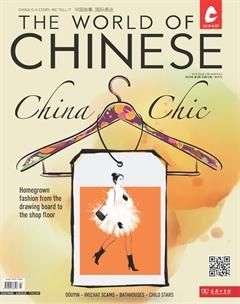Country Driving
TEXT AND Photography by Emily Conrad
A Catholic mountain wedding prompts an unexpected road trip through Sichuan and Yunnan
一場别开生面的婚礼促成了
一次意料之外的西南之旅
Panzhihua cannot be found on maps older than 1965. The southern Sichuan mining hub was developed in a rush to exploit massive deposits of iron ore, titanium, vanadium, and cobalt. Despite being the only city in China named after a flower (the red kapok blossom, which Mao Zedong allegedly saw on a visit to the area), it rarely makes it into travelers itineraries.
A friends wedding changed that for me, but first there was the question of getting there. Having missed my 6 a.m. flight to Panzhihua from Beijing, I discovered that the next flight to the city of 1.2 million was two days away—a day after the wedding. Instead, I booked a flight to Kunming, the capital of neighboring Yunnan province, where a distant relative of the groom, “Brother White Lake,” had agreed to pick me up for the drive across the provincial border.
The GPS said the drive would take close to six hours, but Brother White Lake insisted that it would be no more than three and a half, and that Baidu Maps knew nothing about the countryside. As we sped along the nearly empty highways of Yunnan, one of the least populated provinces of China, I watched the sun set over the nearby mountains, the thrill of unknown adventure heightening my senses.
By the time we arrived in Panzhihua, night had already fallen, and we took refuge at a hot pot restaurant with the bride and groom, Angie and River, who now make the city their home. If Panzhihuas resources have been a blessing to the region, cracks have started to show: Not only does the area now face environmental challenges, managing its mineral wealth involves an undertow of violence and corruption. In 2017, the head of Panzhihuas Land and Resources Bureau walked into a government meeting and opened fire, injuring the mayor and local party secretary before turning the gun on himself.
We would not remain in Panzhihua for long, though. By 7 the following morning, Angie was at her childhood home, getting dressed for the ceremony an hour and half away in Rivers hometown in Dechang county. The peace was suddenly interrupted by insistent knocking and shouting. River stood outside with a group of male friends in suits. “Let me in to see my bride!” River shouted at the top of his lungs. Angies family members congregated at the windows. “No, we wont let you in!” they shouted back, laughing.
The groom proceeded to throw red envelopes, stuffed with money, through the window bars as family members scrambled to grab them. “Its not enough!” her family cried. This mock violence went back and forth a couple more times, and escalated—until River and his groomsmen broke down the door and rushed into the house, elatedly throwing red packets at everyone they saw.
Although Dechangs population is mostly Han Chinese, it is located inside the Liangshan Yi Autonomous Prefecture, where the Yi minority makes up nearly 2 million of the areas 4.5 million inhabitants. Many live in notoriously dangerous mountain areas. In 2016, the “cliff village” of Atuleer in Zhaojue county achieved infamy after photos of children climbing down 50-meter vertical vine ladders to go to school were posted online.
Dechang, by contrast, was a tamer cluster of buildings on a flat plateau alongside a small waterway, surrounded by rolling mountains full of fields. Walking and electric bikes are clearly the most efficient means of transportation inside the countys perilously thin dirt roads with sudden hairpin turns. The processional cars had to move slowly until we reached a small white building that stood at the center of the cluster: a Catholic church.
As soon as the cars started arriving, villagers in the churchs courtyard set off welcome firecrackers, filling the air with dense gray smoke. Bright red lanterns and balloons decorated the churchs fa?ade, and colorful balloons and paper cuts hung from the ceiling, contrasting sharply with the white statue of the Virgin Mary over the entrance. Over the din, Mendelssohns “A Midsummer Nights Dream” blasted triumphantly on the churchs sound system.
The ceremony, conducted by a local Catholic priest, was the first-ever wedding inside the church. Most locals, though, seem to more comfortable in the churchs open-air activity hall, which is where we headed afterwards for the banquet. Throngs of people not invited to the ceremony were waiting outside. “Rivers father is very popular here and there just is not enough space inside for all the guests,” Angie explained. “These people are banqueting in waves. As soon as theyve eaten their fill, they will leave to allow space for others.”
Behind the hall, local women were still cooking in buckets and barrels over makeshift stoves to accommodate the crowds. I learned that each dish on the table had been prepared by a different family to celebrate the newlyweds. “We purchased the ingredients, but we dont have to pay for any catering,” Angie noted. “Try this! All of these greens came from the garden of my husbands grandmother. For the last few days, she has been harvesting non-stop to prepare for the banquet.”

